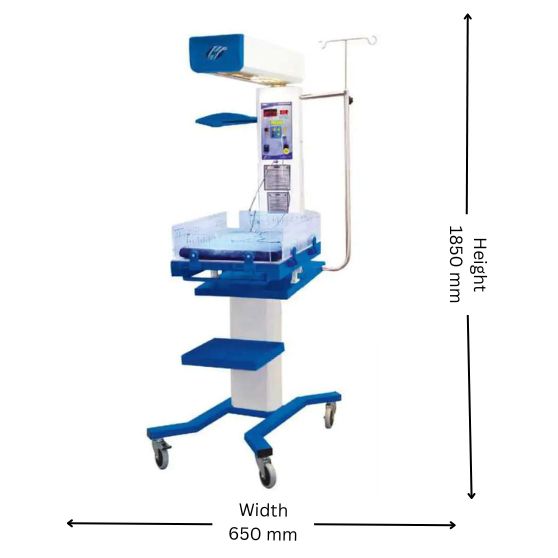
In the realm of neonatal care, the infant radiant warmer stands as a beacon of technological innovation, offering crucial support for the delicate health of newborns, especially those in neonatal intensive care units (NICUs). This comprehensive guide explores the intricacies of infant radiant warmers, delving into their design, functionality, benefits, applications, and the evolving landscape of neonatal care.
Understanding Neonatal Thermoregulation:
Newborns, particularly premature infants, face the challenge of maintaining their body temperature in the early days of life. Thermoregulation, the ability to regulate body temperature, is a critical aspect of neonatal care, as infants are more susceptible to heat loss due to their high surface area-to-mass ratio and underdeveloped thermoregulatory mechanisms.
The Role of Infant Radiant Warmer:
Infant radiant warmers play a pivotal role in addressing the challenge of neonatal thermoregulation. These specialized devices create a controlled environment that mimics the warmth of the mother’s womb, providing a stable and optimal temperature for the newborn. By utilizing a radiant heat source, these warmers ensure a consistent and gentle warmth, preventing hypothermia and supporting the infant’s overall well-being.
Design and Components:
Modern infant radiant warmers are designed with a focus on functionality, safety, and ease of use. The typical components include:
Warmth Source:
Radiant warmers employ a radiant heat source, often infrared or halogen lamps, to emit heat directed towards the infant. This allows for precise control of the thermal environment.
Control Panel:
The control panel enables healthcare providers to set and monitor the desired temperature. Advanced models may feature touch-screen interfaces, intuitive controls, and programmable settings.
Open Design:
The open design of the warmer facilitates easy access to the infant, enabling healthcare professionals to perform medical interventions, administer care, and facilitate parent-infant bonding.
Temperature Sensors:
Integrated temperature sensors continuously monitor the infant’s skin temperature, providing real-time feedback to the control system for immediate adjustments.
Alarms:
Alarms are incorporated to alert healthcare providers in case of temperature fluctuations, ensuring prompt response and preventing potential complications.
Functionality and Operation:
Radiant Warmer Infant functions through a combination of radiant heat emission, sensors, and a feedback control system. The process involves:
Radiant Heat Emission:
The heat source emits infrared radiation, which is directed towards the infant to create a warm and controlled environment.
Temperature Monitoring:
Temperature sensors, often placed on the infant’s skin, continuously monitor the body temperature. These sensors provide feedback to the control system.


